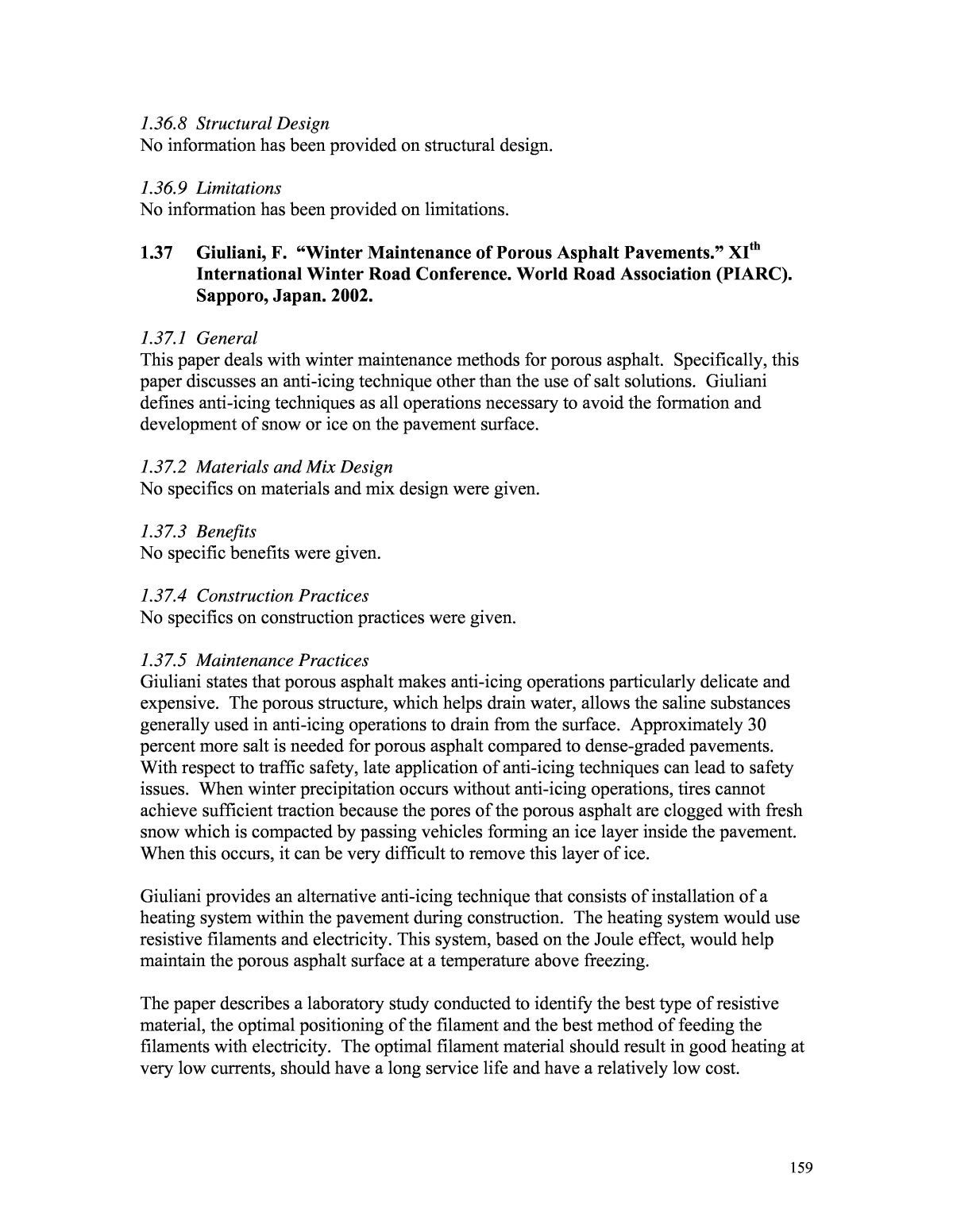
Below is the uncorrected machine-read text of this chapter, intended to provide our own search engines and external engines with highly rich, chapter-representative searchable text of each book. Because it is UNCORRECTED material, please consider the following text as a useful but insufficient proxy for the authoritative book pages.
159 1.36.8 Structural Design No information has been provided on structural design. 1.36.9 Limitations No information has been provided on limitations. 1.37 Giuliani, F. âWinter Maintenance of Porous Asphalt Pavements.â XIth International Winter Road Conference. World Road Association (PIARC). Sapporo, Japan. 2002. 1.37.1 General This paper deals with winter maintenance methods for porous asphalt. Specifically, this paper discusses an anti-icing technique other than the use of salt solutions. Giuliani defines anti-icing techniques as all operations necessary to avoid the formation and development of snow or ice on the pavement surface. 1.37.2 Materials and Mix Design No specifics on materials and mix design were given. 1.37.3 Benefits No specific benefits were given. 1.37.4 Construction Practices No specifics on construction practices were given. 1.37.5 Maintenance Practices Giuliani states that porous asphalt makes anti-icing operations particularly delicate and expensive. The porous structure, which helps drain water, allows the saline substances generally used in anti-icing operations to drain from the surface. Approximately 30 percent more salt is needed for porous asphalt compared to dense-graded pavements. With respect to traffic safety, late application of anti-icing techniques can lead to safety issues. When winter precipitation occurs without anti-icing operations, tires cannot achieve sufficient traction because the pores of the porous asphalt are clogged with fresh snow which is compacted by passing vehicles forming an ice layer inside the pavement. When this occurs, it can be very difficult to remove this layer of ice. Giuliani provides an alternative anti-icing technique that consists of installation of a heating system within the pavement during construction. The heating system would use resistive filaments and electricity. This system, based on the Joule effect, would help maintain the porous asphalt surface at a temperature above freezing. The paper describes a laboratory study conducted to identify the best type of resistive material, the optimal positioning of the filament and the best method of feeding the filaments with electricity. The optimal filament material should result in good heating at very low currents, should have a long service life and have a relatively low cost.
